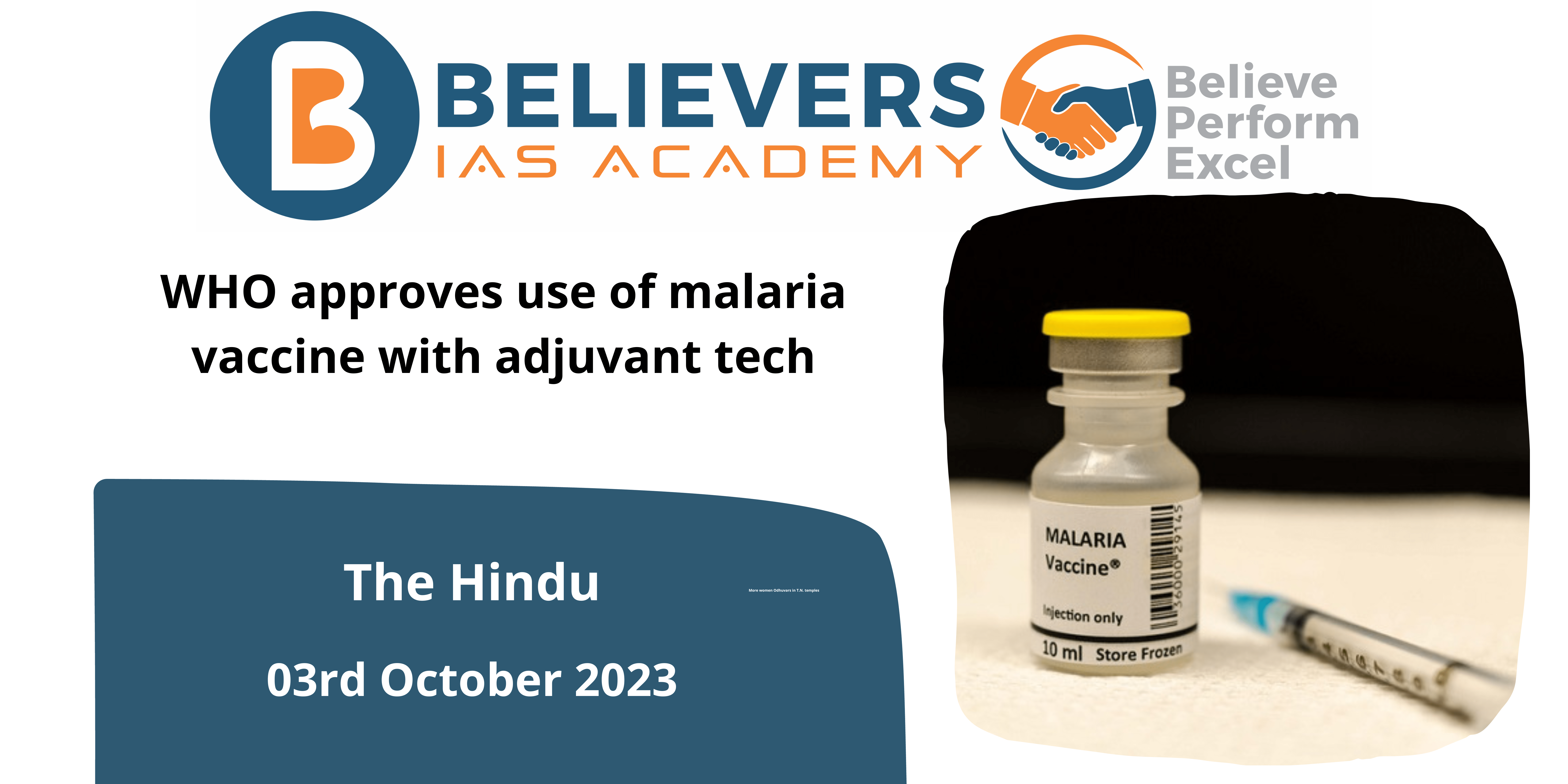WHO approves use of malaria vaccine with adjuvant tech
Context
The World Health Organization (WHO) on Monday authorized the use of the R21/Matrix-M malaria vaccine, which was created by the Serum Institute of India and the University of Oxford using adjuvant technology from Novavax. The vaccine passed all necessary safety, quality, and effectiveness requirements.
What is the R21 Matrix Malaria Vaccine?
- The Serum Institute of India and the University of Oxford collaborated to create the R21/Matrix-M malaria vaccine. The vaccination was advised by the World Health Organization (WHO) to prevent malaria. After the RTS, S/AS01 vaccine in 2021, it is the second malaria vaccine that the WHO recommends.
- R21 is a saponin-based adjuvant that boosts the immune system’s humoral and cellular responses to vaccines. Innate immune cells are stimulated early by the Matrix-M adjuvant at the injection site and in the draining lymph nodes. The strength and calibre of the antibody response to the antigen are enhanced as a result.
What is the difference between R21 and RTS, S?
- A next-generation RTS, S-like vaccine is known as R21. When compared to RTS, S/AS01, R21 is intended to produce a stronger anti-CSP antibody response and a weaker anti-HBsAg antibody response. The core repetitions of the CSP and HBsAg fused to the C-terminus are present in both R21 and RTS, S.
- A portion of a protein released by the sporozoite and a portion of the hepatitis B virus are combined in the subunit vaccine R21. The Plasmodium falciparum parasite, which causes the deadliest cases of malaria worldwide and is most common in Africa, is the target of the vaccine RTS, S/AS01.
What are the possible side effects of the vaccine ?>
- The R21 vaccine was well tolerated in clinical trials and had acceptable side effects. The most common side effects were:
- Fever
- Loss of appetite
- Irritability
- Drowsiness
Who developed the latest type of vaccine?
- The Jenner Institute at Oxford University and the Serum Institute of India worked together to create the R21/Matrix-M malaria vaccine. The European and Developing Countries Clinical Trials Partnership (EDCTP), the Wellcome Trust, and the European Investment Bank (EIB) all provided funding for this partnership.
What are the components of the vaccine?
- The vaccination primarily consists of two parts:
- R21: The antigen or immunogen that sets off the body’s defences against the malaria parasite is this.
- Matrix-M: This is an adjuvant, specifically a Novavax-developed, exclusive saponin-based adjuvant. To increase the efficiency of vaccines by stimulating the immune response, adjuvants are chemicals added to the vaccines.
Conclusion
The WHO’s endorsement and approval of the R21/Matrix-M malaria vaccine mark a significant advancement in the global fight against malaria, a disease that has devastated many parts of the world. The vaccine’s accessibility to those who need it most depends on its availability and scalability.




